When Is the Best Time to Send Email?
Sending your email at the wrong time can derail the most well-crafted campaign. On the flip side, sending your email at the right time can set your email campaign up for success.
Knowing when your audience is most likely to open your emails is crucial. If you’re sending your emails at a time when your audience isn’t actively checking their email, that means your messages get pushed further down the inbox as more emails come in—and are less likely to be seen by your subscribers.
Almost 22% of all email campaigns are opened in the very first hour after they’re sent. And as each hour passes, the likelihood of your email getting more opens, decreases.
So it’s no surprise that many email marketers put significant effort into optimizing their send times to make sure messages reach subscribers when they’re actively checking their inboxes.
But when’s the best time to send email? Like most things in email: It depends!
We analyzed nearly 8 billion email opens by time of day in our latest State of Email Engagement report and found that the results are heavily impacted by geolocation. Keep reading to see our findings.
Wondering how we got this data? In the 2021 State of Email Engagement report, we analyzed almost 8 billion email opens, anonymously collected and aggregated with Litmus Email Analytics from January 1 – August 31, 2021. We include worldwide trends for all industries and verticals. Some email clients may be over- or under-represented, particularly with mobile and webmail. This is due to image blocking or image caching, most notably with Gmail. Still curious? Learn how we get this data.
The best times to send an email
It’s interesting to see how open times differ around the world. In particular, we hone in on the United States, United Kingdom, Canada, Germany, Spain, and Australia & New Zealand.
In general, people tend to open emails in the morning, peaking around 10am and 11am local time. In the United States and Canada, most people tend to open emails in the mornings and as the day goes on, opens trail progressively. In Europe, opens seem to be more consistent during standard working hours with a slight dip around lunchtime, followed by a second peak, then a regression as the day ends.
Let’s dig into the details.
United States
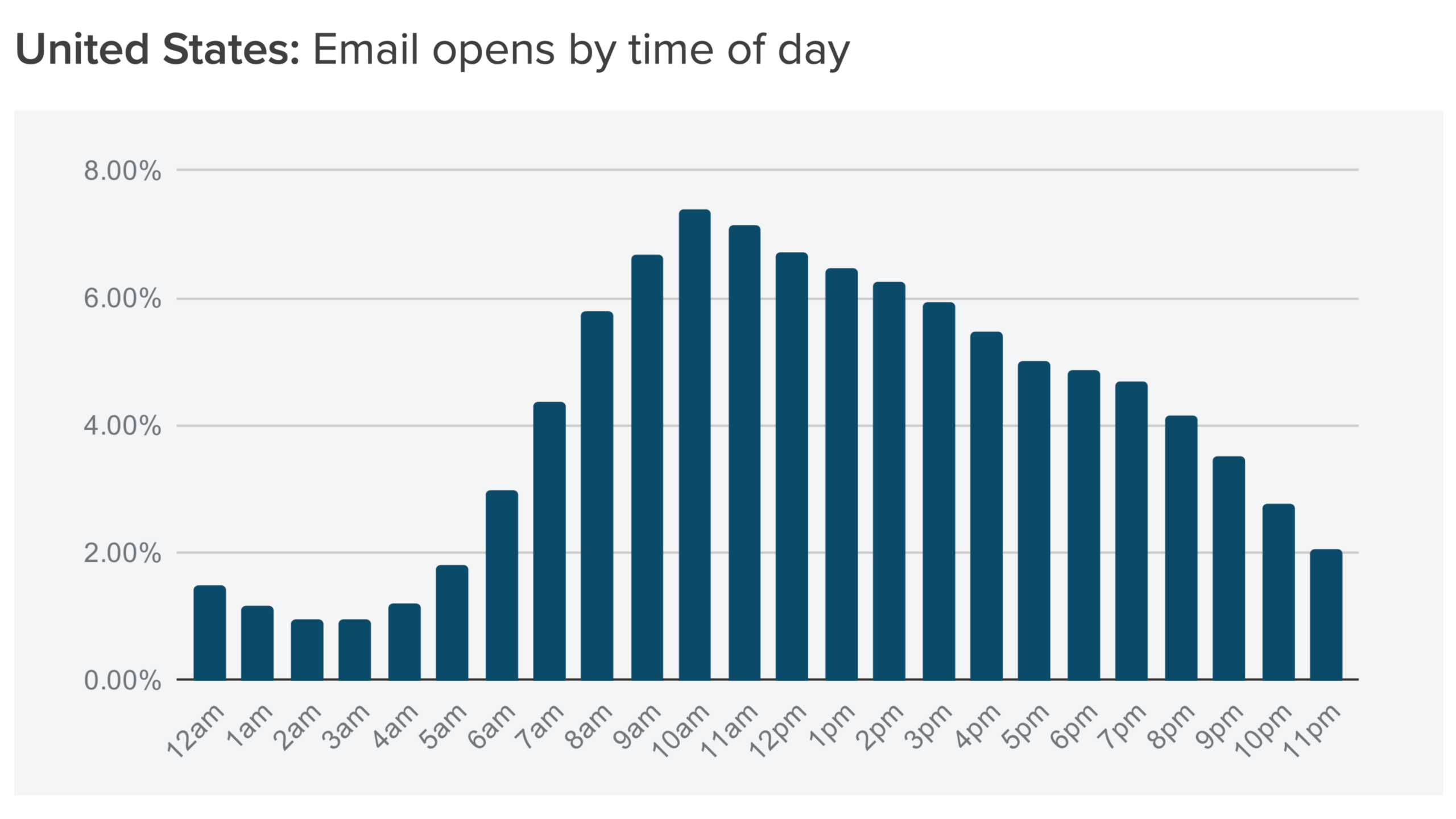
In the United States, the most popular reading time for email is the morning. Opens start to pick up around 6am and continue to rise until the 10am peak. About 7.4% of all opens happen between 10am and 11am, and 21.2% of all opens happen between 9am and noon local time.
United Kingdom
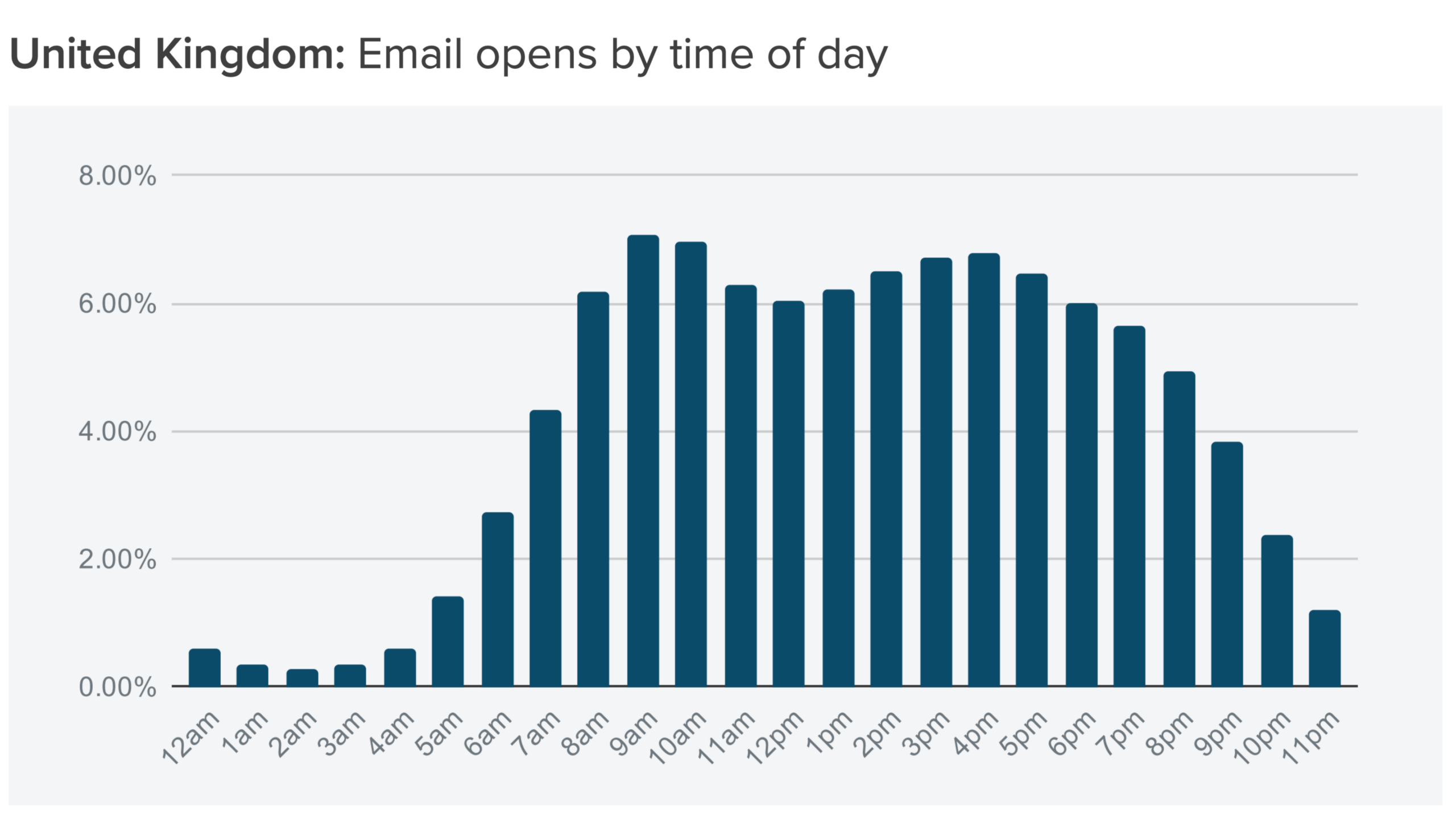
The United Kingdom is most likely to open at 9am, consistent with what we saw in the second half of 2020. About 7.1% of all opens happen between 9am and 10am. Closely following as the second most popular open time is the window after, from 10am to 11am, which accounts for roughly 7% of all opens. Opens are fairly steady during working hours but dip slightly around lunchtime. There’s a small lift after that, then a regression as the day comes to a close.
One thing we noticed: Although the post-lunchtime dip is slight, it’s more drastic in comparison to 2020. Perhaps these behavioral shifts are due to shifts in remote work and the COVID-19 pandemic?
Canada
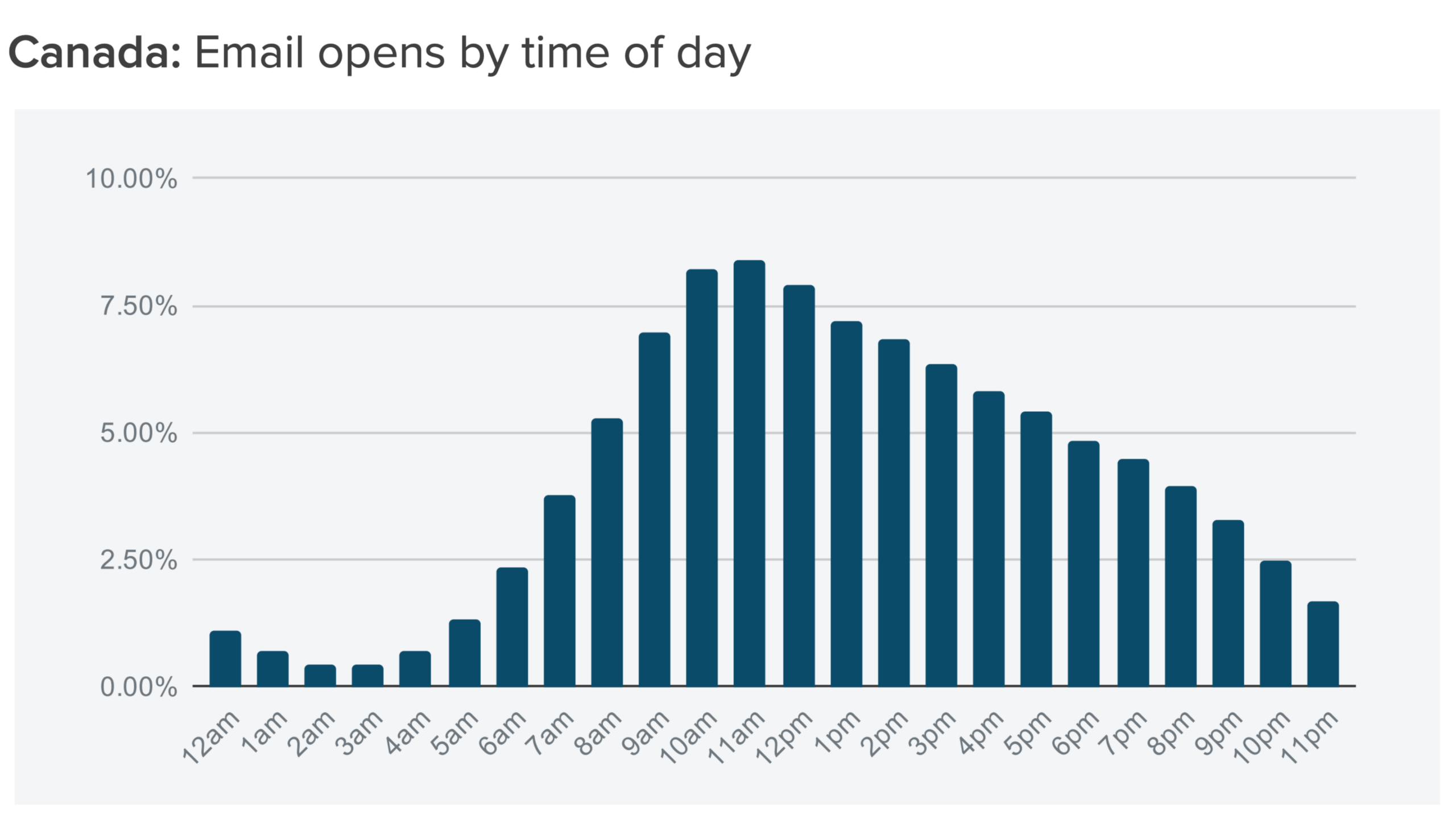
In Canada, the most popular time to read email starts around 10am and peaks at 11am local time, with more than 8% of all emails being opened during that time. Email opens increase significantly by the hour from 6am to 10am. After that, they trail off steadily, after noon—similar to the United States.
Germany
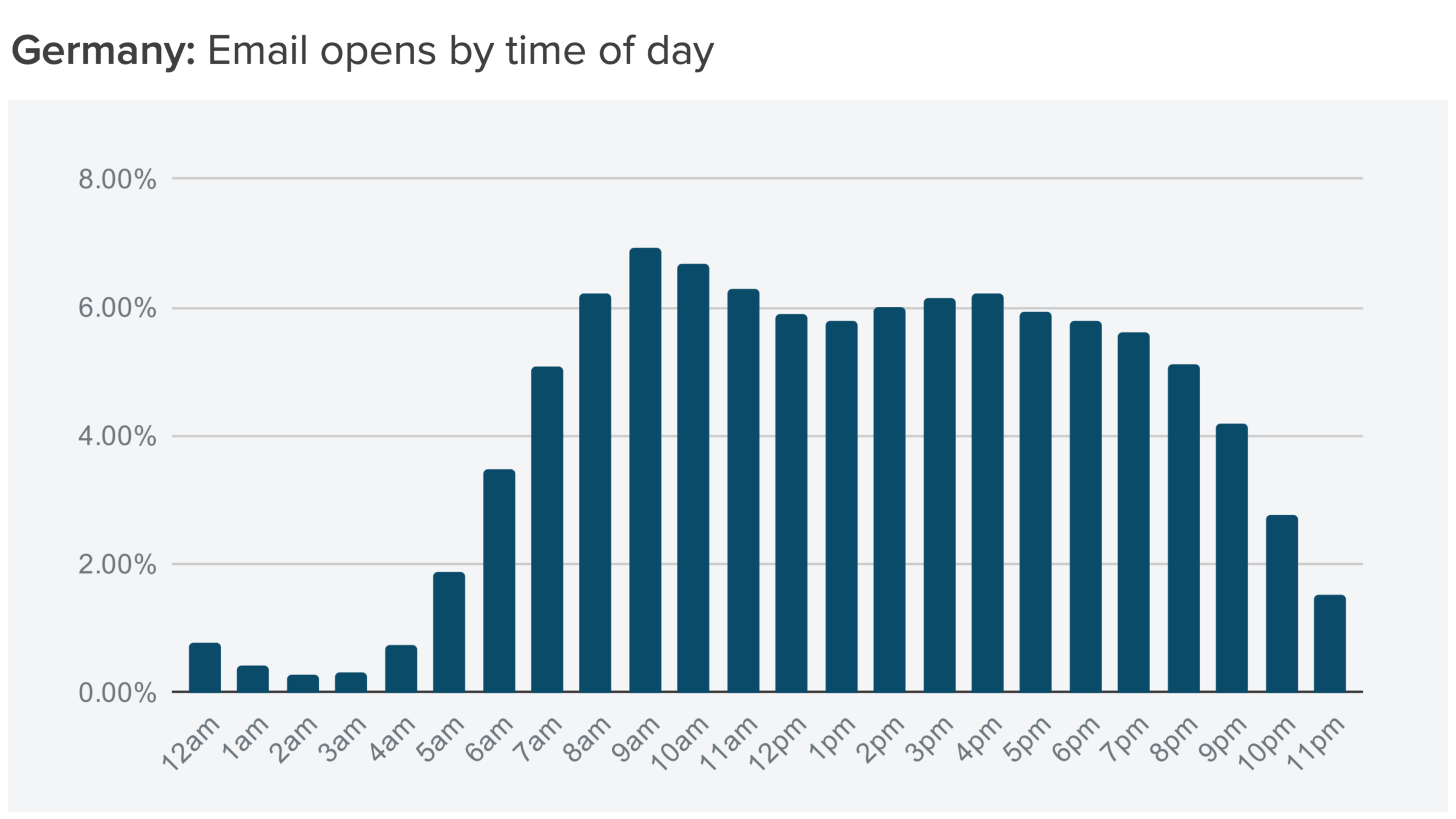
Most emails in Germany are read between 9am and 10am local time, consistent with the data we’ve seen for the past two years.
Like the United Kingdom, there is a dip around lunchtime hours. Additionally, we’re also seeing that the dip is a bit more drastic compared to 2020. After the drop at 1pm, the second peak starts around 4pm, accounting for 6.2% of opens. Last year, the second peak also happened at 4pm, but those opens were below 6%.
Spain
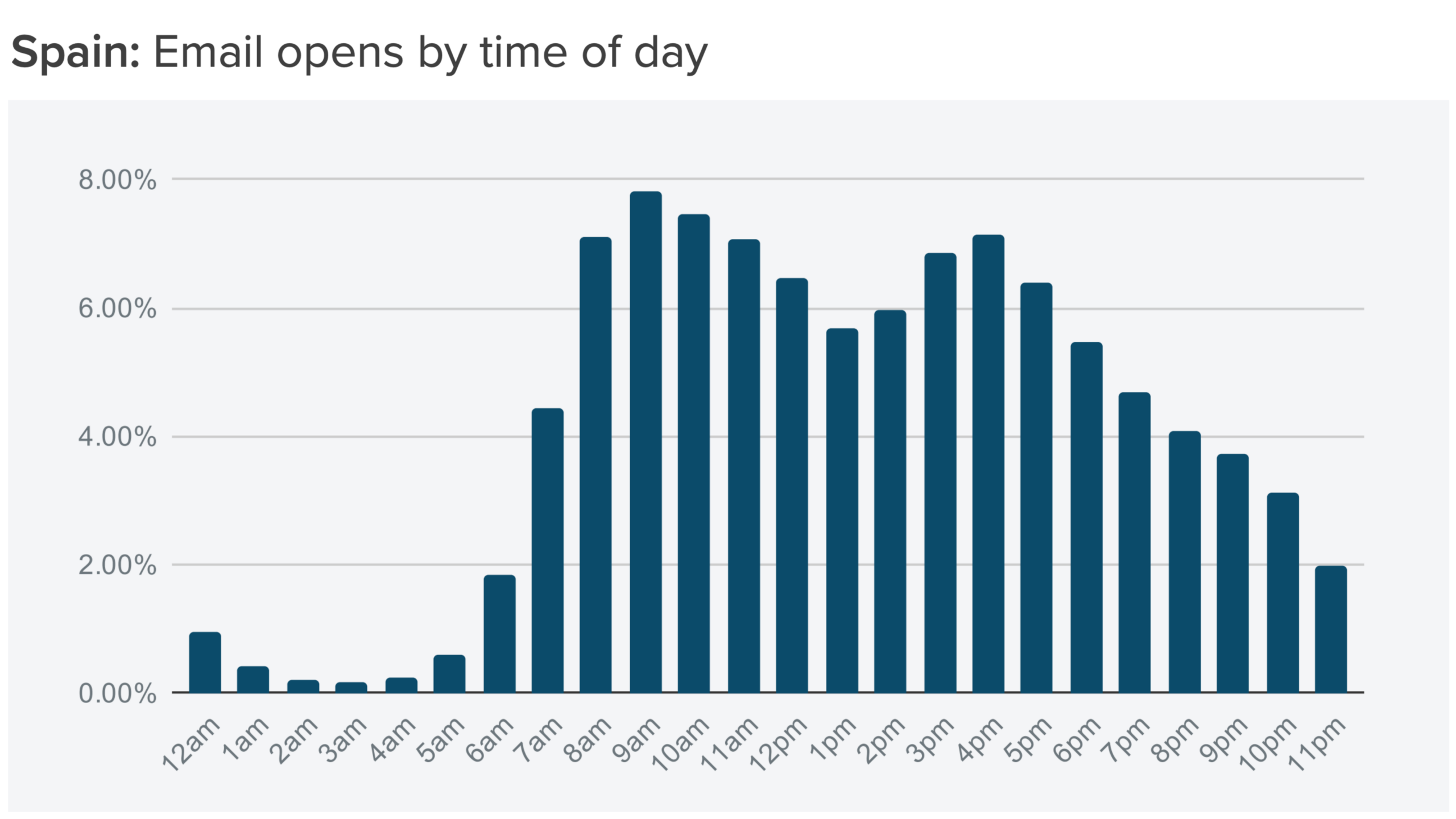
In Spain, most emails are opened between 9am and 11am local time. Spain is known to take long, late afternoon lunches which coincides with the dip in overall email opens between the 12pm through 3pm window, with the furthest dip between 1pm and 2pm. After that, opens rise again for another peak around the 3pm and 5pm window as the work day wraps up.
Australia & New Zealand
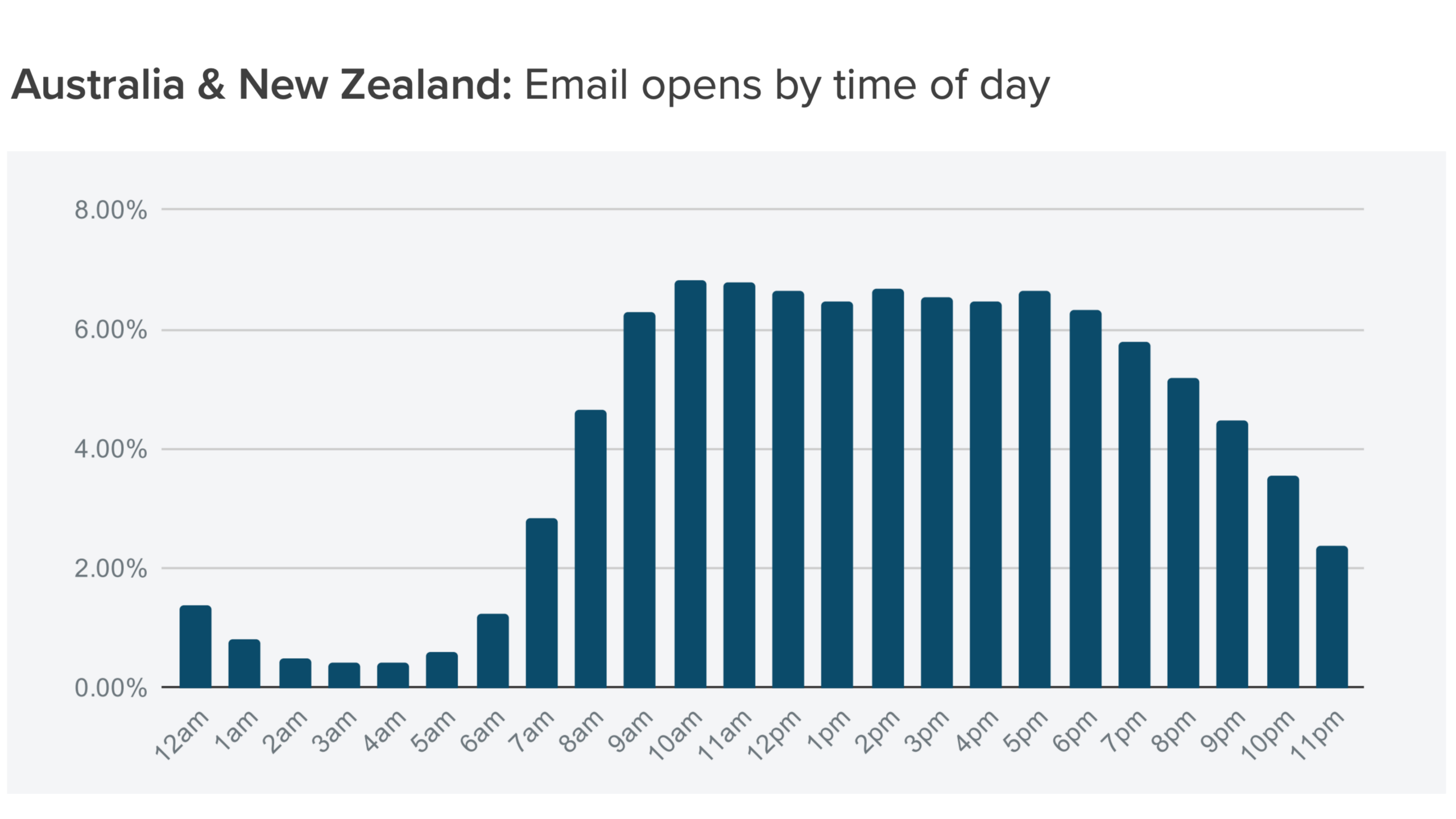
Most emails in Australia and New Zealand are opened at 10am or 11am, consistent with last year. It’s interesting to note that from 9am to 7pm, email opens are all above the 6% mark—the longest streak for opens out of the six regions we looked at.
How to put these insights into action
Our research shows that there isn’t one perfect time to send email. When your subscribers are most likely to engage with your message heavily depends on additional factors like geolocation, the device they use to open your emails, and more. It’s highly individualized.
The insights above can help you get a first idea on what might work for your audience, but it’s even more important that you consider your own subscribers’ behaviors. Here’s how you can do that:
1. Set a baseline for audience engagement
Despite the introduction of Apple’s Mail Privacy Protection, using engagement data—either from your email sending platform or a tool like Litmus Email Analytics—can still be a powerful metric, specifically for understanding your audience’s baseline.
First, identify the most popular open times for your audience. Then, use these insights to test and optimize your send time to see if a shift in send timing leads to a lift in email performance. Make sure you don’t just look at open rates, though. You’ll also want to keep an eye on whether or not different send times might impact click rates and overall conversions.
Another approach is focusing on non-traditional metrics to establish baselines, such as what email clients people open on. Additionally, if a significant amount of your subscribers use Apple Mail, you may want to consider identifying “real opens” and create a baseline from there.
2. Optimize send times for different time zones
If your subscribers span across a range of time zones, and important markets aren’t close to each other, segmenting your list by time zone can be a highly effective approach. Set up your campaigns accordingly using your insights, or use a third-party tool like Litmus Email Analytics.
3. Expand into new markets
Is there a specific region your company would like to grow its market? Start with the insights shared here, but begin testing send times yourself to truly get to know what will resonate with your newfound audience so you can start off on the right foot.
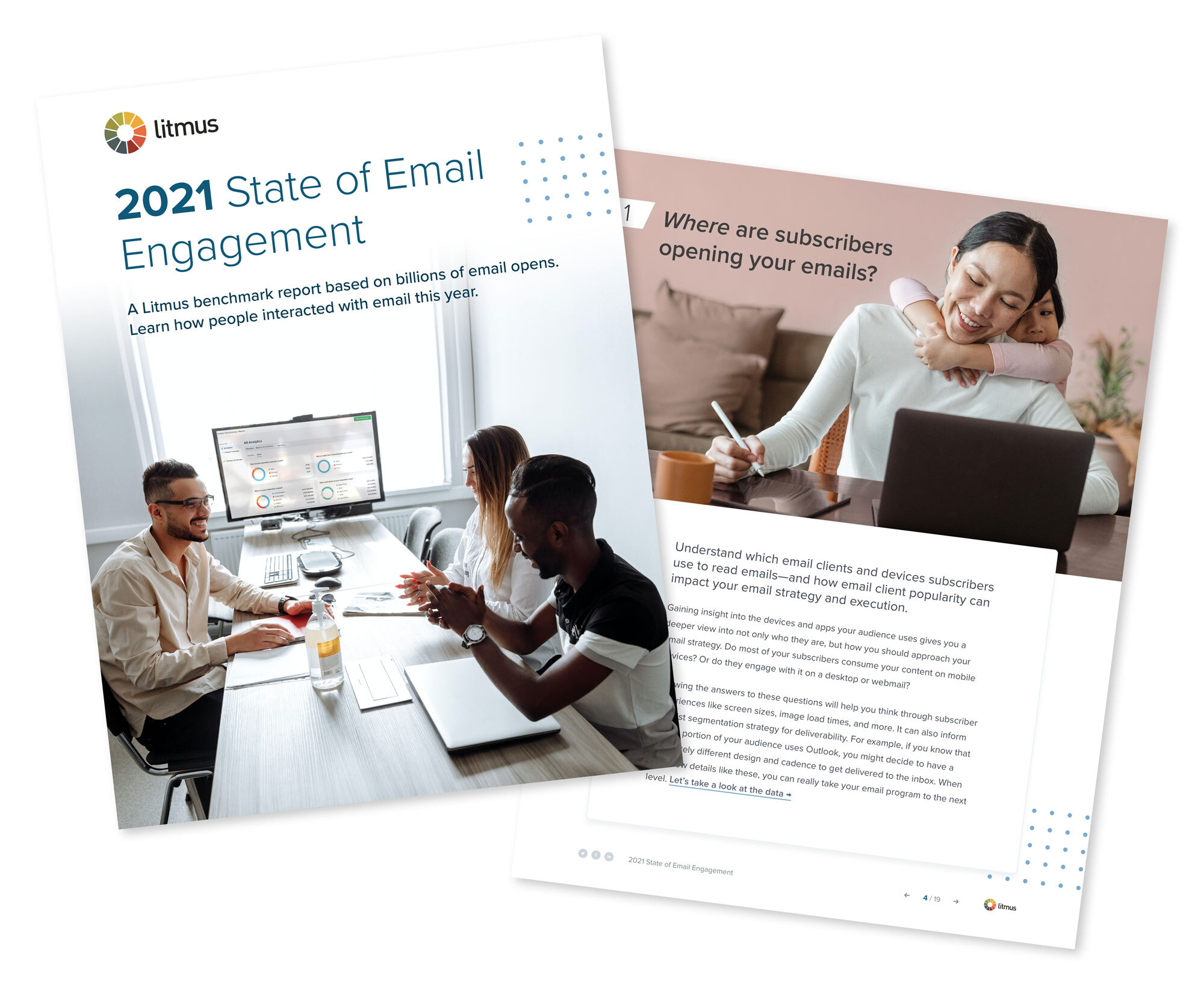 | How are readers actually engaging with your emails? Benchmark your email performance against your peers and learn how to turn engagement insights into strategies and tactics that improve your email program with our latest State of Email Engagement report. |
This blog post was originally published on August 21, 2019, by Bettina Specht. It was last updated on October 7, 2021.

Kimberly Huang
Kimberly Huang is a Content Marketing Manager at Litmus
